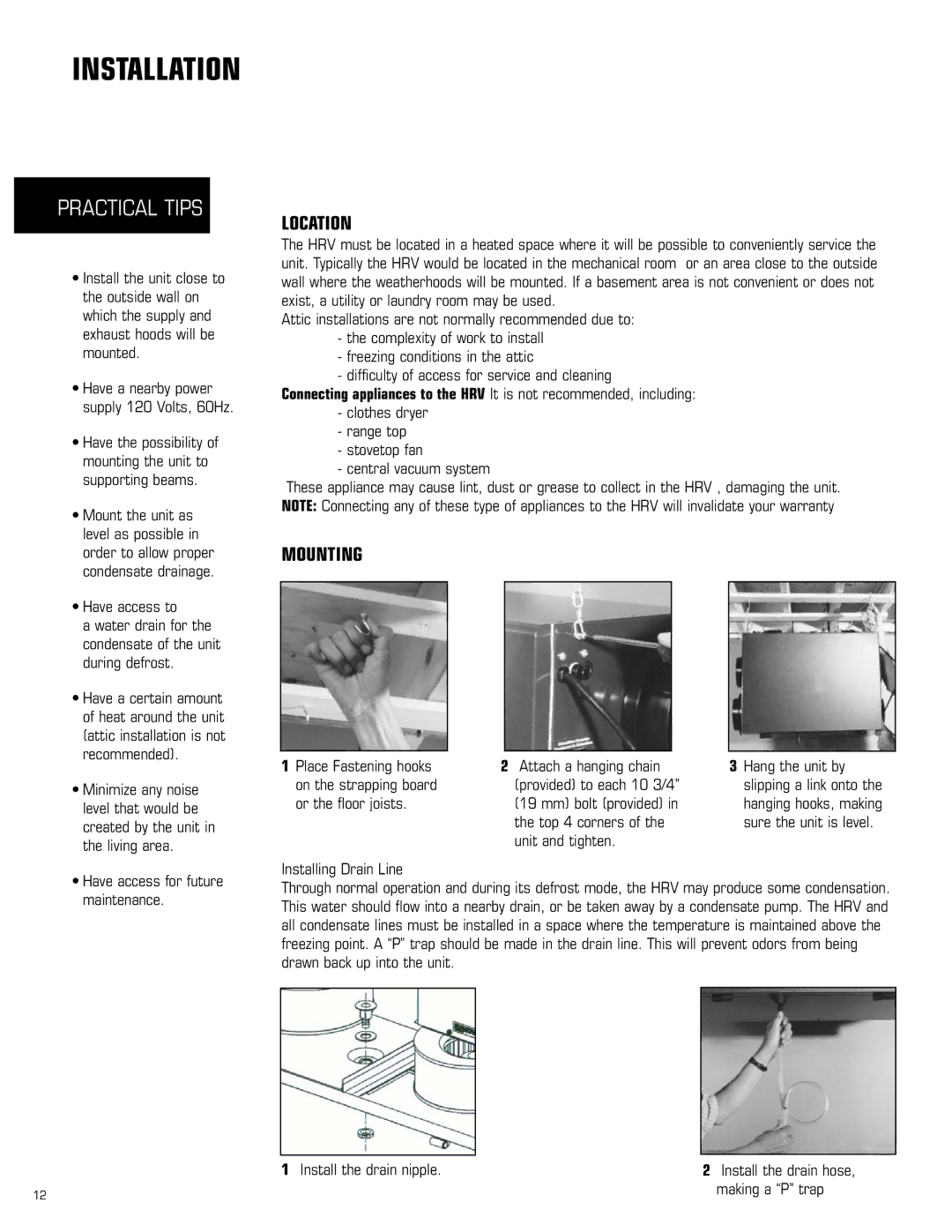
INSTALLATION
PRACTICAL TIPS
•Install the unit close to the outside wall on which the supply and exhaust hoods will be mounted.
•Have a nearby power supply 120 Volts, 60Hz.
•Have the possibility of mounting the unit to supporting beams.
•Mount the unit as level as possible in order to allow proper condensate drainage.
•Have access to
a water drain for the condensate of the unit during defrost.
•Have a certain amount of heat around the unit (attic installation is not recommended).
•Minimize any noise level that would be created by the unit in the living area.
•Have access for future maintenance.
LOCATION
The HRV must be located in a heated space where it will be possible to conveniently service the unit. Typically the HRV would be located in the mechanical room or an area close to the outside wall where the weatherhoods will be mounted. If a basement area is not convenient or does not exist, a utility or laundry room may be used.
Attic installations are not normally recommended due to:
-the complexity of work to install
-freezing conditions in the attic
-difficulty of access for service and cleaning
Connecting appliances to the HRV It is not recommended, including:
-clothes dryer
-range top
-stovetop fan
-central vacuum system
These appliance may cause lint, dust or grease to collect in the HRV , damaging the unit. NOTE: Connecting any of these type of appliances to the HRV will invalidate your warranty
MOUNTING
1 Place Fastening hooks | 2 Attach a hanging chain | 3 Hang the unit by |
on the strapping board | (provided) to each 10 3/4” | slipping a link onto the |
or the floor joists. | (19 mm) bolt (provided) in | hanging hooks, making |
| the top 4 corners of the | sure the unit is level. |
| unit and tighten. |
|
Installing Drain Line
Through normal operation and during its defrost mode, the HRV may produce some condensation. This water should flow into a nearby drain, or be taken away by a condensate pump. The HRV and all condensate lines must be installed in a space where the temperature is maintained above the freezing point. A “P” trap should be made in the drain line. This will prevent odors from being drawn back up into the unit.
1 Install the drain nipple.
12
2Install the drain hose, making a “P” trap
